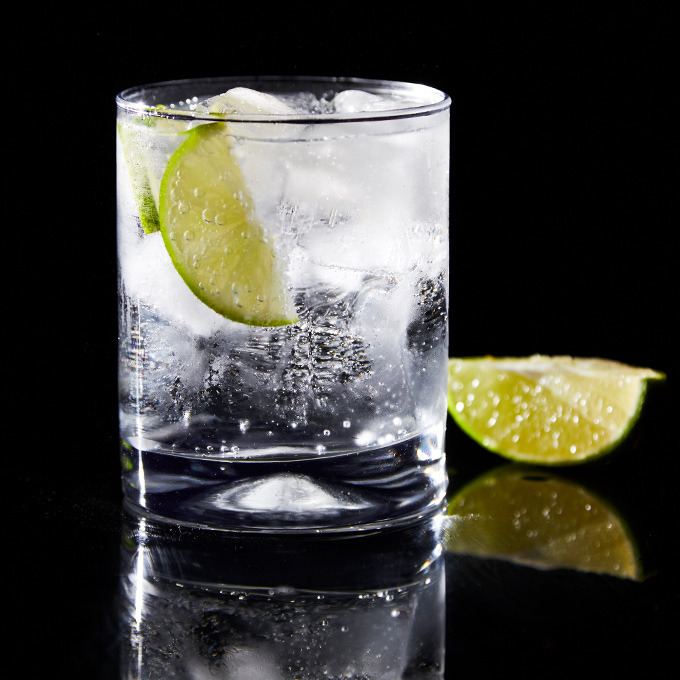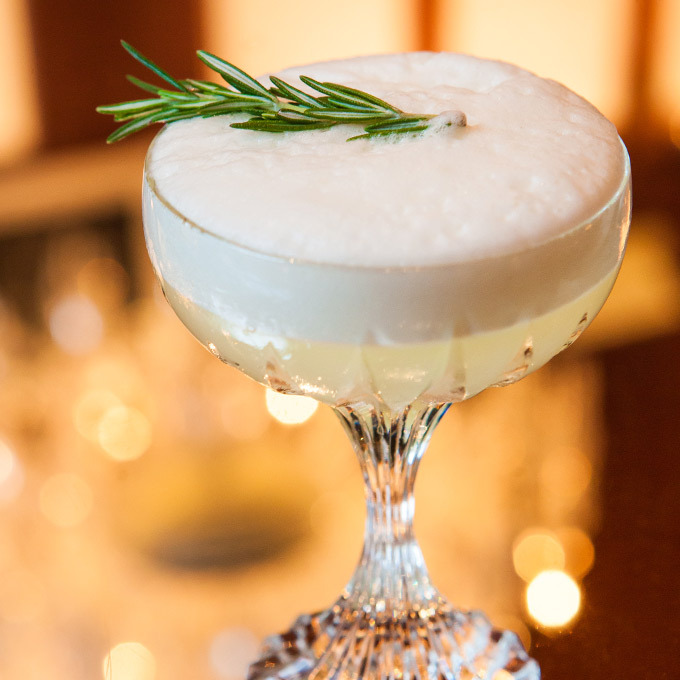Best Gin Drinks 2017
From small-batch distillers to creative cocktails, here's why you should be drinking more gin
"Gin is the spirits industry's latest muse," says Edward Dieusaert, the bar services manager at Cunard who developed an entire gin bar in June called Gin & Fizz, featuring more than 13,500 combinations of gin and tonics. (You'd have to drink a different G&T every day for 37 years to try them all. We're up for the challenge.)
No longer pigeonholed as the medicinal spirit that tastes like a Christmas tree, gin is hotter than ever. Whether it's offbeat botanicals or small-batch producers, the gin scene looks very different today, with gin distillers from Vermont to Japan leaving their mark by creating signature profiles. Think Germany's Monkey 47, made with nontraditional flavors and new botanicals like angelica root, spruce shoots and lingonberries from the Black Forest, as opposed to the typical juniper-heavy gins. That means endless possibilities for cocktails but also a new genre of gins meant for sipping.
Now everyone from bartenders to tonic creators is making use of gin's adaptable qualities to attract new fans—ourselves included. "All of the innovations have actually made it more approachable," Edwin Cruz, bar director at Winsome, says. "It's a cool time to drink gin." Here's more on why.
① Gin-Dedicated Menus and Bars
With the renaissance of classic cocktail culture, gin, which is really versatile in mixed drinks, has made a huge comeback. But bartenders aren't just sticking to martinis and gimlets. They're fashioning all kinds of creative cocktails and designing entire menus and bars around the spirit, like Bathtub Gin in New York or The Gin Joint in Charleston.
The classic G&T is getting extra love, too. What originated as a medicinal drink developed in British-occupied India, the gin and tonic has officially become trendy, dominating cocktail offerings and even inspiring G&T-dedicated menus. The Gin Room in Saint Louis, Missouri, boasts more than 100 types of gins and has a daily G&T special, and spots like Bar Amigo in Brussels now offer gin-and-tonic flights to their customers.
This evolution comes from both the gin and tonic sides. As more imbibers develop discerning palates for gin, the preferred accompaniment is also receiving a closer look. All-natural tonic brands like Fever-Tree, Double Dutch, 1724 and Fentimans, which focus on using real quinine, have emerged in the market recently. And larger brands are jumping on the trend, too; Bombay Sapphire created Bombay Sapphire East, a gin specifically designed for tonic water. Believe it or not, designer water is currently trending, and gin is reaping the benefits.
② New Base Spirits
Though gin cocktails are thriving, gin meant for sipping is also on the rise, thanks to a new focus on unique base spirits. Gin is made by infusing a neutral grain spirit with juniper and other botanicals. Today, however, producers are experimenting with non-grain-based spirits in conjunction with different botanicals, enticing drinkers to sip gins neat to fully appreciate the nuances in their flavors.
"Gracias a Dios makes an amazing agave-based gin that has a slight mescal-esque smokiness to it," Bryan Schneider, bar director for Quality Branded, says. Peach Street Distillers in Colorado has a gin mixed with pear eau-de-vie called Jackalope and Jenny Gin, and there are several New York distillers using apple-based spirits.
③ Creative Botanicals & Expression of Terroir
Along with innovative base spirits, the use of creative botanicals is also becoming increasingly popular. Gin distillers are using newfangled combinations of herbs, roots, spices and barks to "create a totally different experience from one another," Mike Kang, head bartender at Prospect at Scribner's Catskill Lodge, says.
This "provides a great opportunity for producers to include local botanicals in the formula, tying the bottling to their terroir in a way that is unique," Filippo Di Marino, head bartender at Rocco Forte Hotel Amigo in Brussels, explains.
For example, "the Belgian gin tastes mostly floral—perhaps not by accident, when you look at the region. Belgian gin is distilled among all of the blossoms," a bartender from Bar Amigo points out.
Mixologists are running with these myriad flavor profiles, crafting modern versions of classic cocktails and inventing completely new ones. At NYC's Baccarat Hotel, you could order The Petite Marie, which showcases Brooklyn-made gin alongside egg whites, thyme, Chartreuse and rhubarb bitters. Later, you could head downtown to BlackTail for something more out of the box, like a celery sour, made with pineapple, celery, vanilla, lemon, cucumber, Greek yogurt and dry gin. Down in Charleston at 5Church, you'll find a modern twist on the now-hip pre-Prohibition cocktail The Last Word, containing Luxardo, an Italian liqueur made from marasca cherries; lime juice; Chartreuse; and Uncle Val's Botanical Gin, a small-batch line driven by citrus notes like blood orange blossom.
Petite Marie cocktail | Photo: Baccarat Hotel
④ Small-Batch Gin
Speaking of small-batch production, artisanal gin is on the up, too. For a long time, the gin landscape was predictable, with just a handful of brands churning out most of the product. Much like what happened with beer a decade ago, high-quality, low-volume craft gin distilleries—like New York Distilling Company, Cambridge Distillery, Silent Pool and Monkey 47—have started booming in the last five years or so. "Small-batch producers are making unconventional gins that are not the typical juniper-driven, medicinal taste," 5Church beverage director Patricia Smith says. "It's because of this that people are realizing that gin doesn't have to taste like pine needles, but it can taste complex and dynamic. They're opening up the market to a whole new audience."
⑤ Game-Changing Garnishes
Lime and lemon wedges are getting the cold shoulder. Though citrus fruits and herbs are still commonplace, the breadth of botanicals in gins has inspired the use of more creative garnishes, like dehydrated fruit, berries, flowers and spices. At Yves in NYC, for example, bartenders garnish their Debbie Gibson cocktail with a fresh slice of radish, and at Atari Gastroteka in Spain, they use actual juniper berries in their G&T. Further, Cunard's Gin & Fizz menu has six categories of garnishes and bitters, like chiles and edible flowers, imbibers can add themselves.


